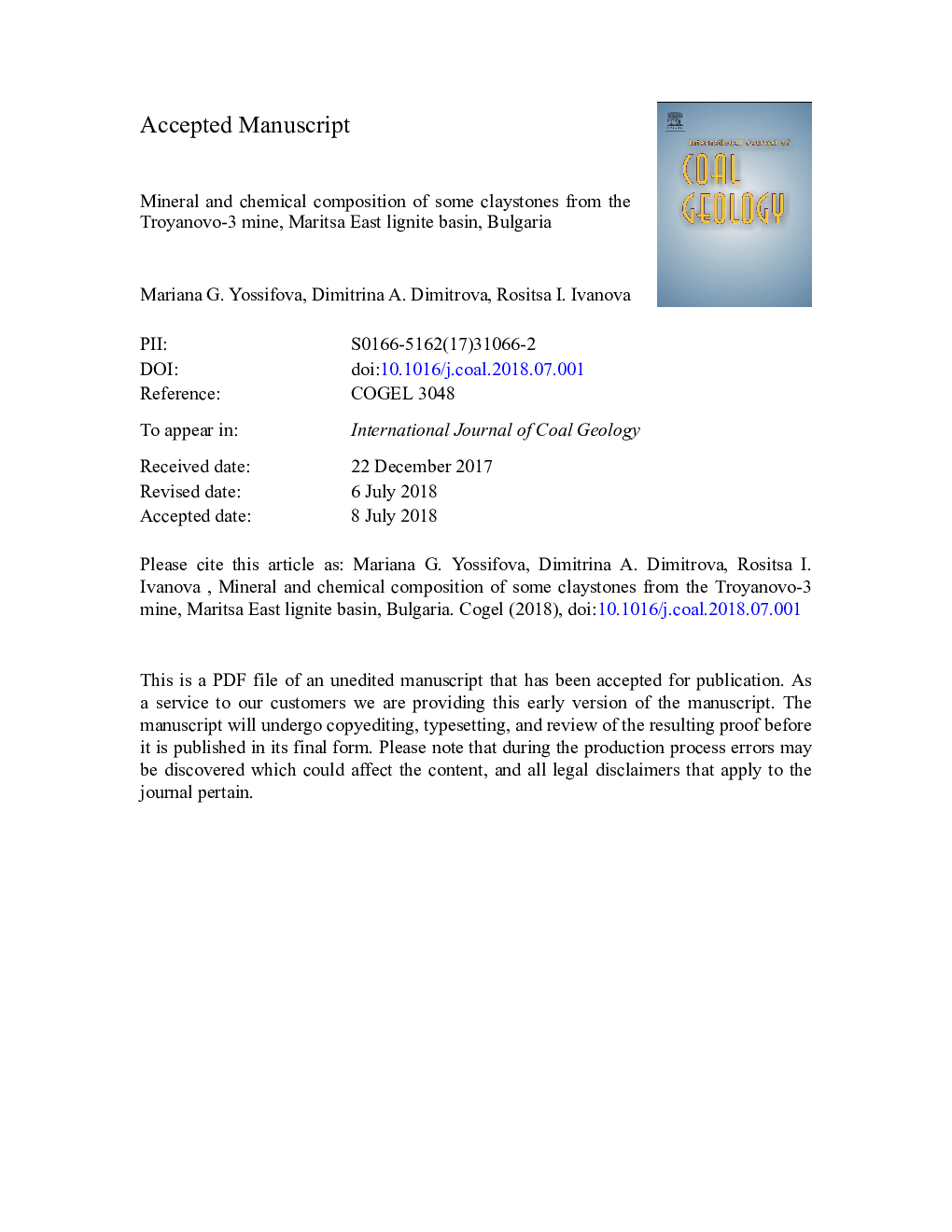| کد مقاله | کد نشریه | سال انتشار | مقاله انگلیسی | نسخه تمام متن |
|---|---|---|---|---|
| 8123287 | 1522507 | 2018 | 42 صفحه PDF | دانلود رایگان |
عنوان انگلیسی مقاله ISI
Mineral and chemical composition of some claystones from the Troyanovo-3 mine, Maritsa East lignite basin, Bulgaria
دانلود مقاله + سفارش ترجمه
دانلود مقاله ISI انگلیسی
رایگان برای ایرانیان
موضوعات مرتبط
مهندسی و علوم پایه
علوم زمین و سیارات
زمین شناسی اقتصادی
پیش نمایش صفحه اول مقاله

چکیده انگلیسی
This paper presents the results of a detailed mineralogical and geochemical study on five types of claystones from the Maritsa East lignite basin in Bulgaria. The studied samples of each claystone type are composite, taken from outcrops at the operated pre-stripping and stripping horizon of the mine. Most of the minerals in claystones, such as quartz, illite, montmorillonite, kaolinite, plagioclase, feldspar, zircon, and mica have terrigenous origin. Pyrite, arsenopyrite, barite, calcite, apatite, gypsum, and goethite are authigenic. A total of 66 elements were analyzed in samples. Based on coefficient of enrichment of elements compared to Clarke values for clays, the samples can be arranged as follows: yellow claystone (43 elements), black claystone 1 (42 elements), blue claystone (25 elements), black claystone 2 (20 elements), and white claystone (17 elements). The black and yellow claystone have highest content of rare earth elements and yttrium (REY). Gold, Ag, Pt, and Pd are highly and unusually enriched in some samples. The dominant mode of occurrence of elements is mineral matter as sorbed on clay minerals (illite, montmorillonite, and kaolinite), structurally bound in other silicates (plagioclase, feldspar), apatite, and goethite. A portion of the studied elements also show affinity to organic matter (Ca, Sr, Mg, P, S, Mo, Sc, Cr, Cu, Cd, Hg, Tl, As, Ag, and HREE+Y). Mercury also has clear relation to kaolinite, as does U - to calcite. The La/Lu, Sm/Lu, and Gd/Lu refer the claystones to mix L-M type (yellow, blue, and black claystones) and H-type (white claystone). The ΣREY in claystones is as follows: black claystone 1 (400â¯ppm), yellow claystone (366â¯ppm), blue claystones (188â¯ppm), black claystone 2 (162â¯ppm), and white claystone (146â¯ppm). These concentrations do not imply that the claystones would be a possible source for extraction of REY.
ناشر
Database: Elsevier - ScienceDirect (ساینس دایرکت)
Journal: International Journal of Coal Geology - Volume 196, 1 August 2018, Pages 93-105
Journal: International Journal of Coal Geology - Volume 196, 1 August 2018, Pages 93-105
نویسندگان
Mariana G. Yossifova, Dimitrina A. Dimitrova, Rositsa I. Ivanova,